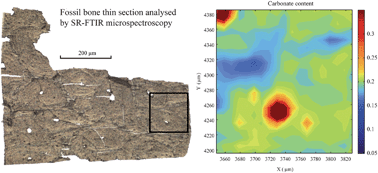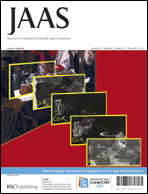Diagenetic alterations modifying fossil bones over geological time can limit their use as archaeological and paleontological proxies. The understanding of fossilization processes and the evaluation of the extent of diagenetic alterations of bones therefore constitute major issues in current research. The complex hierarchical structure of bone tissue and the spatial heterogeneity of the diagenetic alterations induce significant chemical variations in fossil bones at the microscale. We adapted a sample preparation procedure based on PMMA impregnation that allowed us to obtain bone thin sections independent of their level of degradation. As a first step to investigate the variations in bone composition at the histological scale, synchrotron radiation FTIR micro-spectroscopy (FTIRM) was applied on two fossil bone samples displaying distinct preservation states: (a) a bone from Magdalenian layers dated to 15 ka of the Bize-Tournal cave (Aude, France) and (b) another from Song Terus site (Java island, Indonesia, 60 ka). The first one is partially recrystallized but still contains zones with locally preserved collagen and biogenic carbonates, whereas the other consists of a recrystallized mineral fraction without any remaining collagen fraction. These data obtained on the microscale were compared to bulk measurement data and the relationships between different IR diagenetic parameters explored. This analytical approach allowed the characterization of diagenetic alterations such as collagen loss, carbonate uptake and mineral recrystallization in heavily altered fossil bone tissue at the histological scale. Using the presented procedure, the histological bone structures could be studied, even for brittle samples altered by an extensive loss of their collagen matrix during diagenesis.

You have access to this article
 Please wait while we load your content...
Something went wrong. Try again?
Please wait while we load your content...
Something went wrong. Try again?


 Please wait while we load your content...
Please wait while we load your content...